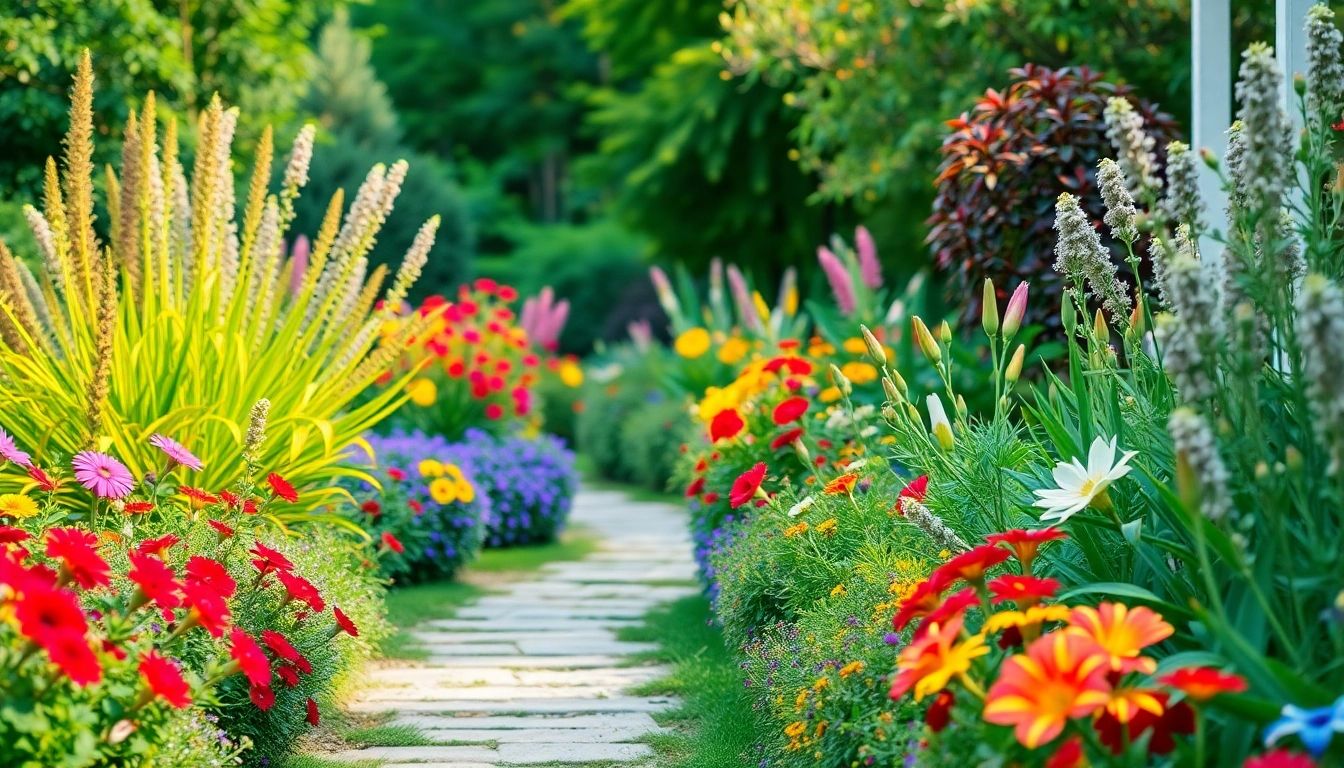Understanding Landscaping Company Pricing Structures
When it comes to enhancing the beauty and function of your outdoor space, knowing how landscaping company pricing works is essential. Landscaping can transform a home’s curb appeal or add functionality to a commercial space. However, understanding the varied pricing structures and what influences these costs is crucial for making informed decisions.
Common Pricing Models for Landscaping Services
Landscaping companies typically employ several pricing models. Understanding these will help you grasp why you’re quoted certain amounts for services.
- Hourly Rate: Many landscaping professionals charge an hourly rate, ranging from $50 to $150, depending on expertise and the job’s complexity. This model is ideal for smaller jobs where a precise scope of work is hard to define.
- Per Square Foot: For larger projects like sod installation or concrete work, companies often charge based on the square footage of the area. This can range from $1 to $5 per square foot, depending on the materials and complexity.
- Flat Rate: For specific projects such as landscape design, installation, or major renovations, flat fees are common. This model allows clients to know exactly what to expect in terms of cost upfront, usually between $1,000 and $10,000 based on the project’s size and scope.
- Design Fees: When landscape design is involved, costs may be separated from implementation. Design services typically range from $50 to $200 per hour or a flat fee, which can be proportional to the overall project cost.
Factors Influencing Landscaping Company Pricing
Several factors can influence how landscaping companies determine their pricing structures:
- Geographic Location: Cost of living varies by location, and urban areas tend to have higher service rates.
- Service Scope: Complexity of the project, which includes design intricacies, material costs, and labor hours, directly affects pricing.
- Seasonal Demand: Landscaping costs might fluctuate based on the season, with higher demand in spring and summer.
- Experience of the Team: Companies led by skilled professionals may charge premium prices for their expertise and superior results.
How to Compare Pricing Among Providers
Comparing pricing across different landscaping companies can be challenging. Use these strategies to make a thorough evaluation:
- Obtain Multiple Quotes: Request at least three quotes to understand a fair price range for your project.
- Examine the Breakdown: Ask for itemized quotes to see what each service costs and assess if it fits your budget.
- Check References: Look up reviews and testimonials to assess the quality of work and customer satisfaction for each company.
- Understand Value Proposition: Cheaper is not always better; evaluate the services offered alongside the price to determine overall value.
Breaking Down Landscaping Costs by Project Type
An important consideration when analyzing landscaping costs is the type of project you are envisioning. Each category has unique pricing structures:
Residential Landscaping Pricing Considerations
In residential areas, landscaping projects can range from basic lawn care to extensive garden renovations. The primary services include:
- Lawn Maintenance: Regular mowing, weeding, and feeding can cost approximately $100 to $300 per month.
- Garden Design: Custom garden designs typically range from $800 to $5,000, depending on design complexity and materials.
- Hardscaping Features: Adding patios, paths, or retaining walls can vary between $15 and $50 per square foot, depending on materials used.
- Tree Planting or Removal: Planting a tree may cost between $100 and $2,000, while tree removal can range from $200 to $1,500, depending on size and location.
Commercial Landscaping Pricing Insights
Commercial landscaping often requires a different approach, given the scale and functionality. Important cost considerations include:
- Design and Planning: Commercial projects often require more intricate designs, with services ranging from $2,500 to $20,000 on average.
- Maintenance Services: Regular maintenance can cost 15% to 30% of the initial landscaping installation cost per year.
- Irrigation Systems: Installing irrigation systems for larger commercial spaces may cost between $1,500 to $5,000, depending on the complexity of the system.
- Seasonal Planting Programs: Seasonal rotations may enhance landscape appeal, typically costing $500 to $3,000 per season.
Seasonal Pricing Variations in Landscaping Services
It is essential to consider how seasonal changes can impact landscaping pricing:
- Spring Surge: Spring often marks the highest demand for landscaping services, leading to higher pricing.
- Summer Drought Concerns: Depending on region, summer might require more water features (and thus higher costs) or drought-tolerant landscaping.
- Fall Preparation: Preparing landscapes for winter, including mulching and seasonal planting, can lead to discounts.
- Winter Dormancy: Many companies offer packages during the offseason to retain business, leading to potential savings.
Hidden Costs in Landscaping and How to Avoid Them
Many homeowners and commercial property owners overlook hidden costs, which can catch them by surprise. Recognizing and preparing for these can keep your budget intact:
Understanding Permits and Licenses Costs
Before initiating many projects, it’s crucial to understand if any permits or licenses are required:
- Permit Costs: Permits can significantly vary by locality, ranging from $50 to $500, depending on the scope of work.
- HOA Regulations: Homeowners Associations may require approvals and have specific regulations, impacting costs and designs.
- Environmental Considerations: Some areas may require inspections due to environmental regulations, incurring additional fees.
Protecting Yourself from Surprises: Contracts and Agreements
A well-drafted contract can protect against unexpected costs and service discrepancies:
- Always Get it in Writing: Ensure all services, costs, and timelines are documented.
- Review Contract Clauses: Pay attention to clauses concerning change orders and late fees—being informed can save money.
- Scope of Work: Clearly define the scope of work to avoid misunderstandings or additional charges mid-project.
How to Factor in Maintenance Costs Post-Installation
Post-installation maintenance costs can often outweigh initial project expenses:
- Regular Maintenance Costs: Depending on plant types, costs can total between $100 to $400 monthly.
- Long-Term Planning: Consider durability and maintenance needs as part of your initial landscaping decisions.
- Evaluate Seasonal Needs: Some plants and features require more attention in certain seasons; plan your maintenance schedule accordingly.
Negotiating with Your Landscaping Company for Better Pricing
Once you have a grasp on potential costs, negotiating effectively can save significant money:
Tips for Honest and Effective Negotiation
If you approach negotiations strategically, you can often secure better pricing:
- Do Your Research: Know the average costs for similar landscaping services in your area.
- Be Upfront About Budget: Clearly communicate your budget to the landscaper, allowing them to tailor options within your range.
- Discuss Project Timing: Off-season work may provide opportunities for discounts.
When to Ask for Discounts or Promotions
Strategic timing can lead to financial savings:
- Off-Peak Season: Request discounts during fall or winter when demand is lower.
- Referral Programs: Many companies offer discounts for referrals; consider leveraging this.
- Package Deals: Inquire about package pricing if you need multiple services performed.
Establishing a Mid-Long Term Relationship for Best Rates
Building lasting relationships with landscaping providers can yield advantages in pricing:
- Loyalty Discounts: Ask about discounts for repeat customers or for long-term contracts.
- Consistent Maintenance Services: Establishing regular maintenance contracts can yield better pricing.
- Communication is Key: Maintain open dialogue about expectations and services to foster a positive, mutually beneficial relationship.
Evaluating Value Beyond Landscaping Company Pricing
Ultimately, landscaping costs cannot be the only driver of decisions; assessing value and service quality is equally significant:
Assessing Quality of Work vs. Cost
In landscaping, the cheapest option may not always return the best value. Consider the following:
- Portfolio of Previous Work: Review portfolios to gauge quality and reliability.
- Professional Affiliations: Memberships in professional organizations can indicate quality standards and ethical practices.
- Warranty Offers: Reputable landscaping companies may offer warranties on their work, adding value.
The Importance of Customer Reviews and Testimonials
Customer feedback is an essential metric for determining quality:
- Online Reviews: Utilize platforms like Google, Yelp, and social media to gather insights into past client experiences.
- Case Studies: Ask about previous projects similar to yours, to understand potential outcomes.
- Network Recommendations: Seeking referrals through personal contacts often leads to trustworthy providers.
Long-Term Benefits of Choosing the Right Landscaping Service
Investing in a reliable landscaping company can offer substantial long-term benefits:
- Increased Property Value: Quality landscaping can significantly enhance the curb appeal and market value of a property.
- Enhanced Environmental Benefits: Expertly designed landscapes improve not only beauty but also local ecosystems.
- Stress Relief and Increased Enjoyment: Professionally maintained landscapes can improve overall enjoyment and reduce outdoor maintenance stress.
Understanding landscaping company pricing structures is vital to making informed decisions for your residential or commercial needs. By assessing pricing models, discerning various costs by project type, recognizing hidden fees, and establishing fruitful negotiation strategies, you can navigate the landscaping market effectively. Additionally, valuing quality over cost and considering long-term partnerships can create an outdoor space that not only enhances beauty but adds significant value to your property.








